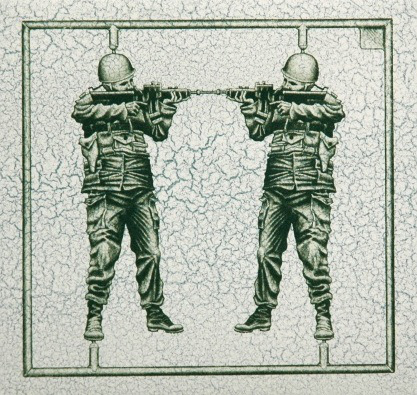Most “friendly fire” incidents do not get reported. Sometimes they come to light, a few here and there but the full extent of the damage caused during war by inaccurate identification or calculation, or care, is generally underplayed, as it shows one more ugly truth about war. Furthermore, most acknowledged incidents refer to soldiers in battle, and neglect the civilian casualties, victims of such inaccuracies, miscalculation and negligence.
Today Democracy Now! reports that “5 U.S. Soldiers, 1 Afghan Killed by “Friendly Fire” Strike”: Five U.S. service members and at least one Afghan soldier have been killed in what appears to be one of the deadliest instances of friendly fire of the war in Afghanistan. The soldiers were mistakenly killed by an airstrike that was called in by U.S. troops to beat back a Taliban ambush. The incident occurred in Zabul Province where soldiers were conducting security operations ahead of Saturday’s presidential runoff. An earlier “friendly fire” strike killed five Afghan soldiers in March. Afghans have opposed the airstrikes for mistakenly killing civilians, with President Hamid Karzi refusing to sign a long-term security deal with the United States until the air attacks stop.”
The very name, “friendly” fire is oxymoronic and joins a long list of euphemisms dedicated to sanitise the image of war and make it more palatable. “Collateral” damage, ethnic “cleansing”, and so many others. The high tech precision of the killing machines is a figment of the imagination and human error under the type of circumstances created during battle (high stress, kill or be killed, drugs to stay awake) is inevitable.
I looked at Wikipedia, which may not be always a completely accurate account of things but the list of well documented episodes of friendly fire is startling and clearly only a minute fraction of them has been reported by the Media. They also go back a long way in history, but there is no evidence that modern warfare is in anyway more “accurate” or “friendly fire safe” than in the olden days.






